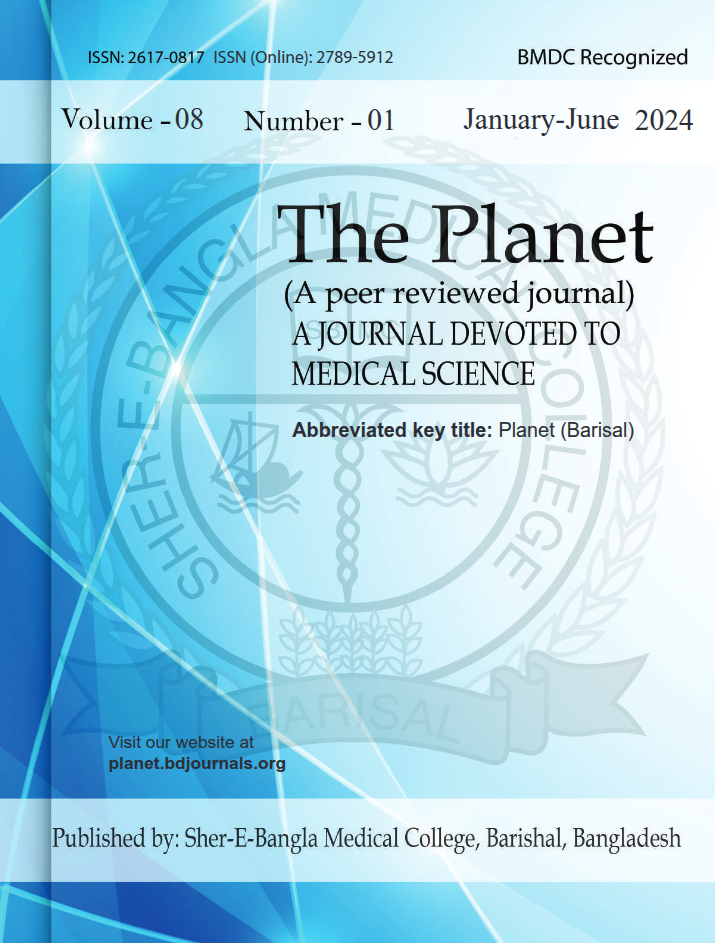Published 28-12-2024
Keywords
- P16,
- Malignant Lesions,
- Oral Cavity
Copyright (c) 2024 The Planet

This work is licensed under a Creative Commons Attribution 4.0 International License.
How to Cite
Abstract
Background: Oral cavity lesions range from benign to malignant, with squamous cell carcinoma being the most common cancer. p16, a cyclin-dependent kinase inhibitor linked to HPV-related oncogenesis, has emerged as a useful marker for differentiating these lesions. This study evaluates p16 expression in benign, premalignant, and malignant oral lesions. Methods & Materials: This cross-sectional observational study was conducted in the Department of Pathology at Sir Salimullah Medical College, Dhaka, Bangladesh, from 2017 to 2019. A total of 60 patients presenting with clinically suspicious oral cavity lesions were enrolled. The chi-square test was applied to determine the association between histological diagnosis and p16 expression. A p-value of <0.05 was considered statistically significant. Result: In this study of 60 patients with oral cavity lesions, the majority (56.7%) were between 41–60 years of age, with a male predominance (male: female = 1.85:1). Histopathologically, 90% of the cases were malignant, most commonly well-differentiated squamous cell carcinoma (43.3%) and moderately differentiated squamous cell carcinoma (36.7%). p16 expression showed strong staining exclusively in malignant lesions—most notably in early invasive squamous cell carcinoma (100%), followed by well-differentiated (53.8%) and moderately differentiated squamous cell carcinoma (40.9%). Benign and premalignant lesions showed only weak to moderate staining. Conclusion: The differential expression of p16 across benign, premalignant, and malignant oral lesions underscores their value as adjunct diagnostic tools. Increased p16 expression correlates with higher grades of dysplasia and malignancy.



